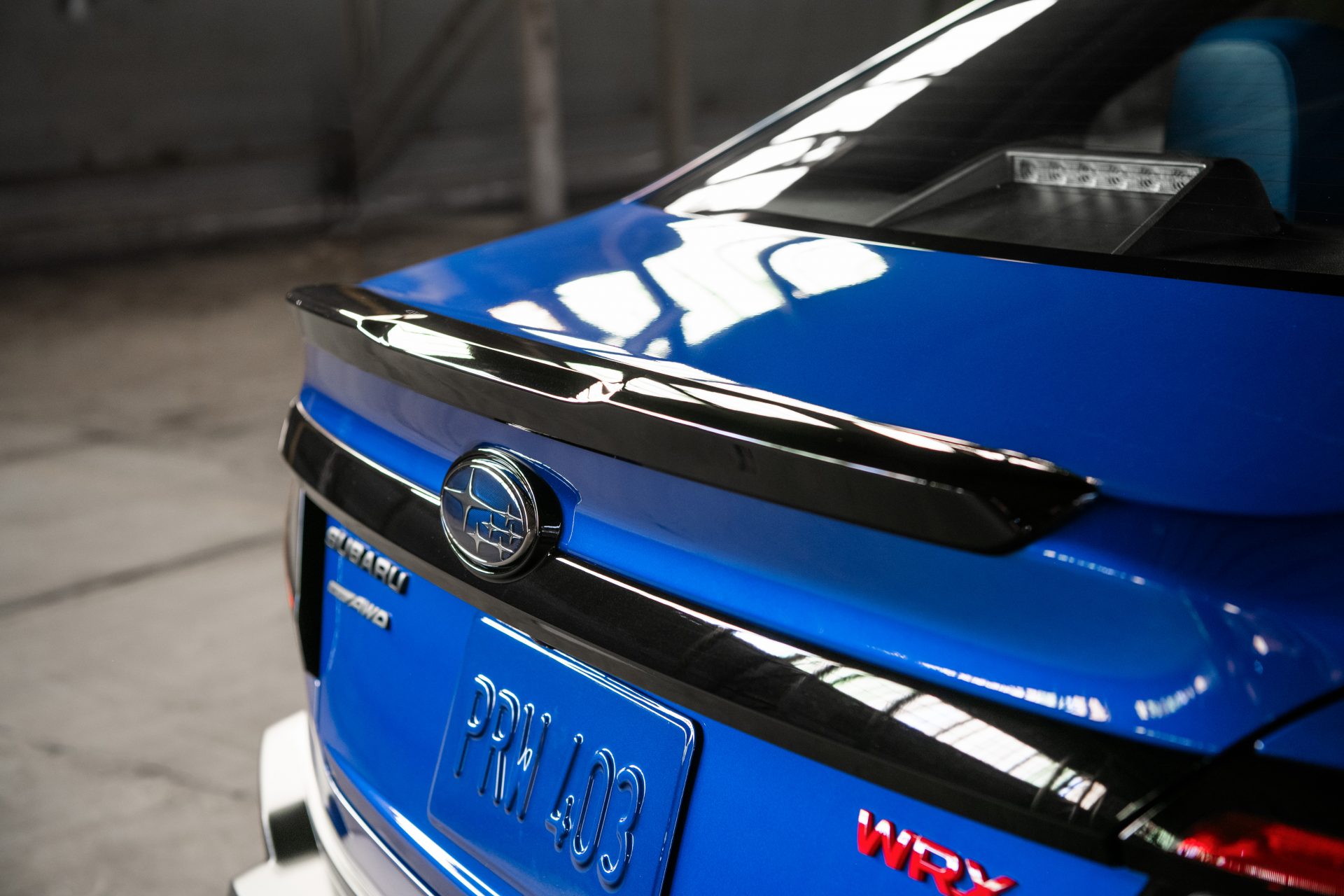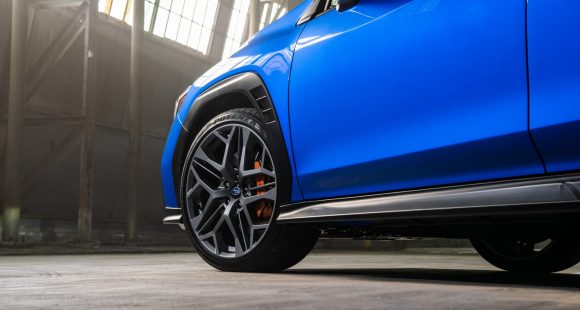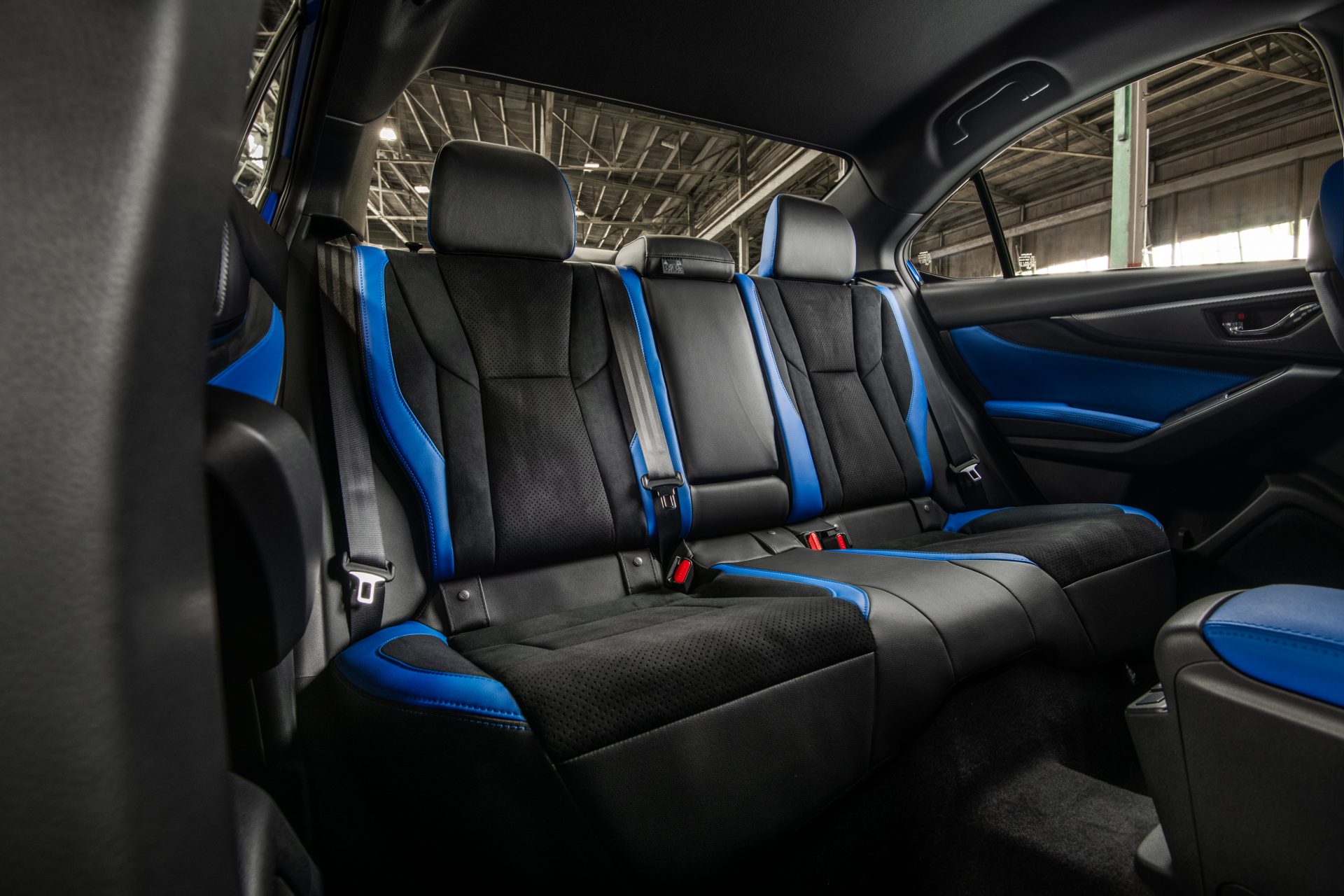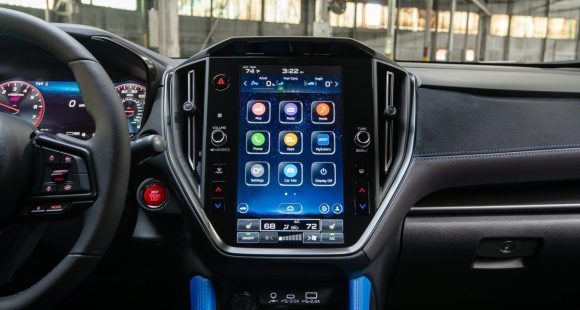2013 Lexus GS 350
Lexus is on a mission, to shed their image of building cars that are very luxurious and high tech, but boring to drive. First came the compact IS-F, than the exotic LFA, and now they’re turning their attention to a car with wider appeal, the mid-size GS sport sedan. So, is the latest GS a Lexus reborn?
With the fourth generation 2013 GS 350, Lexus does appear to break from their luxury-overload mold. Not that the rear drive GS has been a snoozer. Truth be told, the previous GS was already fast, and more entertaining to drive than most people gave it credit for. The biggest problem was electronic, with one of the most aggressive and intrusive stability control systems on the market that quickly kept you from having any real fun. So, the fix was more of a software one than hardware. Not that the hardware hasn’t changed.
 The 2013’s body and chassis are all-new. And, the sheet metal is undeniably more aggressive… at least from the front, with huge air intakes that widen towards the pavement, menacing HID headlights with LED running lights, and LFA inspired curves. In profile, the look is more familiar, with smooth sides and thick C-pillars, leading to a rear end that is tall with a trunk-lip spoiler, L-shaped tail lamps with lens mounted fins, and an aggressive lower fascia with integrated dual exhausts.
The 2013’s body and chassis are all-new. And, the sheet metal is undeniably more aggressive… at least from the front, with huge air intakes that widen towards the pavement, menacing HID headlights with LED running lights, and LFA inspired curves. In profile, the look is more familiar, with smooth sides and thick C-pillars, leading to a rear end that is tall with a trunk-lip spoiler, L-shaped tail lamps with lens mounted fins, and an aggressive lower fascia with integrated dual exhausts.
Feeding those pipes is a slightly revised 3.5-liter V6. Horsepower and torque are up marginally, to 306-horsepower and 277 pound feet; Lexus puts 0-60 at 5.7 seconds. There are no plans for a V8, but engineers added an Intake Sound Generator that sounds like one. The GS 450h Hybrid will boast 338-horsepower. A revised, paddle-shift 6-speed automatic is standard. New is drive-mode selector with ECO, Sport, and Sport Plus settings. All wheel drive is once again an option.
With all this, plus endless Lexus hype, we knew the GS would outperform its predecessor. But, on our first drive even we jaded journalists were impressed with the improved handling. This new found prowess still relies heavily on electronics however, mainly a new Adaptive Variable Suspension. To that, add Electric Power Steering, Dynamic Handling with Variable Gear Ratio Steering, Dynamic Rear Steering, and Vehicle Dynamics Integrated Management.
But, the most important difference for the new GS, is genuine feel and feedback, which in itself is game changing. Sure, even with the upgraded F-Sport Package, there are times when the car’s handling is not telegraphic, but also in un-Lexus-like fashion, you can turn all the electronic traction nannies off!
Looking around the inside of the new GS, its still classic Lexus, but with a nod to the best from BMW. High end leather abounds, with contrasting stitching on the dash. The wood and leather wheel features many controls, and can be heated. The Lexus remote touch central controller still manages most functions, but it now has a more convenient push-to-enter design. The optional nav system grows a hooded center screen from 8 to 12 inches. And, for as big as it is, it never seemed intrusive. Voice activation is included.
 Gauges look 3-D with lighting that changes from ECO Blue to Angry Red in Sport Mode. Our GS Luxury was equipped with just about every amenity you could imagine, head-up display, blind spot monitoring, night vision, window shades all around, and comfortable, heated-and-cooled, 18-way power adjustable front seats. Even rear seat occupants get coddled with flip down armrest controls for heated seats, climate, and audio. Leg room is up thanks to redesigned front seats. The trunk is also roomier, due to a more compact rear suspension. Capacity is up to 14.3-cubic feet.
Gauges look 3-D with lighting that changes from ECO Blue to Angry Red in Sport Mode. Our GS Luxury was equipped with just about every amenity you could imagine, head-up display, blind spot monitoring, night vision, window shades all around, and comfortable, heated-and-cooled, 18-way power adjustable front seats. Even rear seat occupants get coddled with flip down armrest controls for heated seats, climate, and audio. Leg room is up thanks to redesigned front seats. The trunk is also roomier, due to a more compact rear suspension. Capacity is up to 14.3-cubic feet.
Government Fuel Economy Ratings haven’t been released yet, but estimates are 19-City and 23-Highway on Premium. Nor is pricing set, but when sales start in February, expect the GS 350 sticker to start about where it does now, near $48,000.
While the 2013 Lexus GS 350 is undeniably more capable and fun to drive, it still falls short of providing the absolute feedback of European and even American rivals. The F-Sport model is more serious; but outside of wheels, tires, and brakes even it relies mostly on electronics for its increased capabilities. We’re not saying that that’s wrong, but engineering “feel” is a lot harder than engineering “performance.” So, Lexus, the new GS is a big step in the right direction. Now, let’s take a few more.
Specifications
- Horsepower: 306
- Torque: 277 lb-ft.
- 0-60 mph: 5.7 seconds
- EPA: 19 mpg city/ 23 mpg highway
2025 Subaru WRX tS
Subaru’s “World Rally eXperimental” Gets Tecnica-Tuned Tech
Building on its global rally heritage, WRX has been a standalone Subaru nameplate, marketed separately from garden variety Impreza, for two generations now. And while the current WRX still lacks the full STI treatment, this WRX tS serves up some of that high-performance spice we’ve been longing for.
Before we go flat out into our Track Test of this 2025 Subaru WRX tS, lets open the Subaru dictionary so we’re all on the same page. “tS” stands for “tuned by STI;” and “STI” is an acronym for “Subaru Tecnica International,” the brand’s high-performance sub-group best known for upgrading the WRX— oh, that stands for “World Rally eXperimental,” in case you didn’t know.
All that said, STI has been largely dormant for this WRX generation, but this tS sprinkles more of their engineering magic into the mix. No, that doesn’t mean extra power, but does mean significant chassis-related improvements.
First, electronically controlled dampers, adjustable through the 11.6-inch tablet-style infotainment screen. That meant a softer “comfort” mode on the 10+ hour commute to and from Savannah’s Roebling Road Raceway. But once we were there, it was the firmer “Sport+” setting all the way, heightening response from the WRX’s throttle and already quick dual-pinion power steering system. There’s still some body roll for rally-esque weight transfer, but it’s well sorted and provides the “toss-ability” you want in a WRX.
Though if you do autocross your tS, which we implore you to do, you might feel the six-piston front, two-piston rear Brembo brakes first. The bite is strong, giving good rotation in the corners and plenty of “halt” for this 3,400 lb. compact with minimal fade, keeping us on track all week…until some unfortunate winter weather passed overhead. No worries here, as Subaru’s Symmetrical All-Wheel-Drive system got us to the track for some powdered deserts: Frosted donuts served up Michelin style, a set of winter tires different from the grippy Bridgestone Potenza S007 rubber the tS typically rides on. Some prior hot laps of California’s Sonoma Raceway gave credence to those Bridgestones, and showed us what this hot-compact can do in ideal conditions.
It’s well sorted and provides the “toss-ability” you want in a WRX.
Other tS enhancements are cabin-based, namely these beautiful blue Recaros. Most of our staff appreciated their moderately-aggressive bolstering on both street and track. And they’re even heated, too. Another tS-only appointment is this 12.3-inch digital gauge display. It mimics the standard analog gauges with some additional info, but can switch to a navigation mode for more convenient route guidance.
We do wish our tS came in the new Galaxy Purple or the trademark World Rally Blue, but this Crystal White paint wasn’t too shabby, contrasting its Cherry Blossom Red badging and blacked-out lip spoiler. Otherwise, the tS is like any other WRX, down to the hood scoop funneling air to the top-mounted intercooler.
Underneath is the same turbocharged 2.4-liter flat-four in all other trims, boxing at 271 horsepower and 258 lb-ft of torque. The freak winter weather stopped straight-line testing, but a 0-60 time estimate of 5.5 seconds is about as spry as you realistically need, pulling strong through most of the tach; though the 6,000 RPM redline required attentive shifting of the six-speed box, which the tS comes exclusively with. The throws are precise, if a little long, and the clutch is wonderfully weighted.
With discontinuation of the Base trim, pricing for the WRX now starts with Premium at $36,920. The tS is at the top of the lineup with the automatic-only GT, both starting at $46,875. All WRXs continue to be made in Gunma, Japan.
If you’re an enthusiast itching to do the tuning yourself, perhaps the 2025 Subaru WRX tS is not for you. But if you want a plug-and-play experience, this is it. While it won’t exactly bestow the loose-cannon, top-level driving skills exhibited by famous WRC drivers upon you, the tS moves this WRX’s game in a direction we’ve so desperately wanted Subaru to take.
Specifications
As Tested
- Engine: 2.4-liter flat-four
- Tranmission: 6-speed manual
- Horsepower: 271
- Torque: 258 lb-ft











































